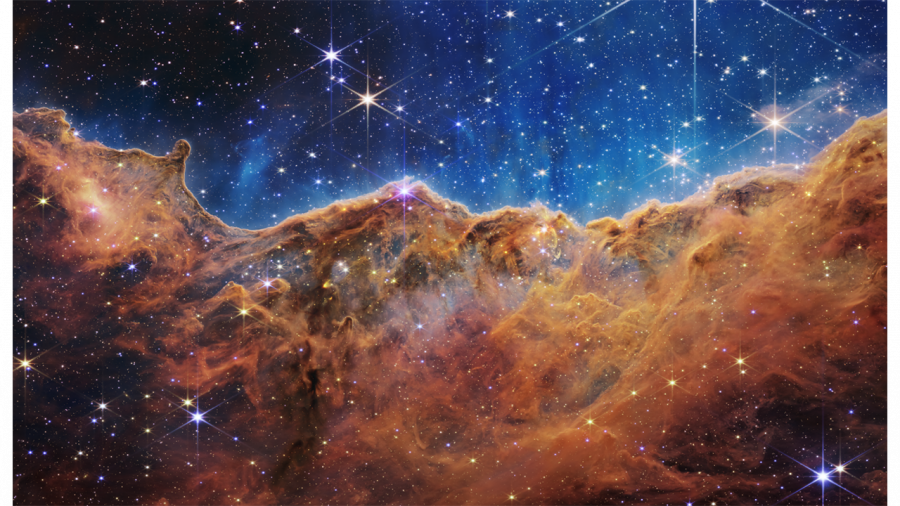


Seeing a night sky filled with heavenly objects will take your breath away, especially when you are surrounded by darkness without the light pollution of big cities. With the aid of a telescope and someone who knows where to point, stargazing provides a way of embarking on a journey through space that you will always remember as you witness the grandeur of the Cosmos. There is always a curiosity within us that wants to know what lurks beyond our human eyes in the deep darkness of space. It was the ancient’s curiosity when the heavenly stars appeared at night that they not only experienced them but also wanted to study their movements and search for common patterns leading to the laws of the Universe. This is how the oldest of all sciences, Astronomy, was conceived. We were in the middle of Everglades National Park in South Florida when one of my energetic and highly motivated high school students introduced me to viewing the nighttime skies with a telescope. John Doryk, the head of our High School Science Club at the time, coordinated a Mars Party where we would view the planet Mars. As a young teacher, it struck me that there was so much to learn when you began to probe areas trillions of miles away.
These distant objects travel at unimaginable speeds; our Milky Way Galaxy, for example, according to space.com, is estimated to be hurtling through space at 515,000 miles per hour, with 2 billion stars and a mass of one trillion times the sun. These objects are all controlled by invisible physical laws that provide stability and order in the vastness of space. It was an unforgettable moment for me when I realized this was another opportunity to tell the world about our Creator’s glory through Astronomy. Every human in every nation of the world can see the heavenly wonders that God has named and numbered as stated in Psalm 147:4-5:
He determines the number of the stars and calls them each by name. Great is our Lord and mighty in power; His understanding has no limit.
It is no wonder that knowledge is revealed for everyone to experience, all pointing to a magnificent, all-intelligent, and almighty Creator who can touch every living soul, as eloquently expressed by King David in Psalm 19:1-3:
The heavens declare the glory of God, and the sky proclaims His handiwork. Day-to-day it pours out speech, and night-to-night reveals knowledge. There is no speech, nor are there words, whose voice is not heard.
There was no confusion during the early days of modern science that God’s attributes were being displayed in the heavens, as stated in Romans 1:20, as universally accepted. The study of heavenly bodies and their motions was becoming more refined, and the field of astronomy would make inroads that would have significant implications for our perspective on the Cosmos. Many believed and followed the Greek Geocentric model, where the Earth was the center of the solar system. As more accurate measurements of planet movements were made in the sixteenth Century, Nicolaus Copernicus (1473-1543) revived the Heliocentric theory where the Sun was at the center of the Solar System. In the early 17th Century, German astronomer Johannes Kepler (1571-1630) dedicated his life to providing evidence to support Copernicus’s Heliocentric theory. In 1687, he discovered three basic laws of planetary motion using accurate observable data from the Tyco Brahe observatory and thorough, predictable mathematical principles. His creative and careful analysis of planetary movement gave us a complete picture of how planets move today. Planets do not move around the sun in a circular orbit but in an elliptical pattern. Kepler’s laws would open doors to a much deeper study of the forces that control the universe. With the assistance of famous contemporary fellow genius, Galileo Galilei (1564-1642), Kepler invented and improved the telescope and observed planetary objects that overwhelmingly supported the Heliocentric theory, putting to death the idea that the earth was in the center of the solar system.
Kepler believed that studying God’s handiwork in the Universe was an honor for him, as cited in one of his quotes: “Science is a process of thinking God’s thoughts after Him.” As a notable mathematician, he observed a harmony of moving colossal heavenly objects that were finely tuned by invisible laws that could only be instituted by an omnipotent God as he stated, “The chief aim of all investigations of the external world should be to discover the rational order and harmony which has been imposed on it by God and which He revealed to us in the language of mathematics.” Kepler understood our relationship with our Creator and Savior in such a way that he could appreciate the orderly design of being uniquely created in God’s image; as he stated,
Those laws of nature are within the grasp of the human mind. God wanted us to recognize them by creating us after his own image so that we could share in his own thoughts.
Two centuries later, Sir Isaac Newton (1642-1727), one of the greatest scientific minds of all time, revolutionized the understanding of the laws of the universe.
Newton used the basic principles of Kepler’s laws of planetary motion to formulate his Universal Gravitation law. Newton proposed that the operative force was gravity, defined as the dynamic attraction between objects in space. This force acted like glue to keep objects together and operating in perfect order. Newton introduced his universal gravity law and laws of motion in 1687 in the world-shattering work, The Principia. His work required him to develop calculus, which was an incredible achievement. Newton opened our eyes to the laws that we can observe, experiment, test, and predict outcomes on Earth, which also exist in the vastness of space. Like Kepler, Newton logically concluded that the laws he discovered resulted from the almighty Creator, whom he credited, stating, “This most beautiful system of the sun, planets, and comets could only proceed from the counsel and dominion of an intelligent and powerful Being.” [1] Newton contributes gravity to divine power as an Intelligent Agent, stating, “Gravity may put the planets into motion, but without the divine power, it could never put them into such a circulating motion as they have about the sun; and therefore, for this as well as other reasons, I am compelled to ascribe the frame of this system to an intelligent Agent.” [2]
On Christmas Day, 2021, the James Webb Space Telescope (JWST) was launched to examine deep space by capturing the long waves of the light spectrum in the infrared region. It would assist the Hubble telescope, which was aging, launched in April 1990. It has captured amazing, countless unique images of the universe in the normal light range for over 33 years. The new JWST has a large primary mirror, six times the size of the Hubble’s because it must be able to capture infrared waves emitted further into space to identify heavenly bodies we have never seen before.

The images returning from the JWST were spectacular, making us realize that the universe is much bigger and denser than we ever thought. We have seen well-formed mature galaxies deep in space where secular scientists predict the universe began. This contradicts long-age cosmologists’ belief of a universe conceived 13.7 billion years ago. They hold to a date that keeps going back in time because there is no known mechanism for how the universe came out of nothing. Secularists are blinded to the Universe’s grandeur, which comes from a grand designer. They are deliberately ignorant of the fact that it is embedded in the history of modern-day science that has given birth to great minds who believed in God, their Creator, and Savior, as stated in Isaiah 55:9 (ESV),
For as the heavens are higher than the earth, so are my ways higher than your ways and my thoughts than your thoughts.
Originally published at the Creation Studies Institute.
FOOTNOTES (Click the footnote number to return to where you left off)
[1] Newton, Sir Isaac. Newton’s Philosophy of Nature: Selections from His Writings (p. 42). Dover Publications. Kindle Edition.
[2] Newton, Sir Isaac. Newton’s Philosophy of Nature: Selections from His Writings (p. 53). Dover Publications. Kindle Edition.

No spam, stay up to date on new articles, resources and events!
Get notified about new articles from the Institute.